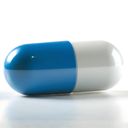Infections: Treatment Overview
May 17, 2022Infections can be caused and can be spread by a number of different things. Depending on the cause, type, size, and area of infection, recommended treatment can vary.

The Inside Rx Blog
Get the Inside Scoop on tips & tricks that may help your family save on prescriptions!
Subscribe to stay up to date with the latest news and tips
Reviewed by the Office of Clinical Evaluation and Policy (OCEP), Evernorth
Infections develop when there is a growth or multiplication of microorganisms in or on the body. Infections can be caused by a variety of microorganisms, and, if left untreated, can lead to serious problems. Some types of bacteria live in the body naturally and even provide benefits. However, an overgrowth of bacteria, particularly those that don’t normally live in the body, can cause infections. Other microorganisms that cause infections include viruses, fungi and parasites.
Infections can be spread through various means, including but not limited to contaminated food, close contact with an infected individual, and sharing of personal items. The recommended treatment for the infection depends on the type of organism causing the infection.
Continue reading to learn more about common infections and their possible treatments.
Bacterial Infections
Bacteria is almost everywhere, including your body, but it doesn’t always cause harm or result in an infection. For example, lactobacillus acidophilus, a bacteria found in your gut is helpful—it helps digest food and can help fight off bad bacteria. However, an overgrowth of any bacteria, especially in areas of the body where they normally aren’t present, can lead to an infection. Bacterial infections can affect the skin, eyes, lungs, eyes, and other parts of the body.
A bacterial infection typically needs to be treated with antibiotics. Before prescribing antibiotics, your doctor will determine the type and severity of the bacterial infection. Blood or swab tests may be needed to correctly identify the particular bacteria causing the infection.
In many cases, your doctor may prescribe broad-spectrum antibiotics, which are designed to kill a range of bacteria. A doctor can often identify the suspected bacteria based on clinical symptoms, medical history, and other factors. Mild bacterial infections can generally be treated with oral antibiotics. However, severe bacterial infections may require a hospital visit with targeted intravenous (IV) antibiotic therapy. Antibiotics generally work by attacking the bacterial cell wall or other parts or functions of the bacteria needed to survive.
Examples of commonly used antibiotic drugs include:
- Penicillins
- Cephalosporins
- Tetracyclines
- Aminoglycosides
- Fluoroquinolones
- Macrolides

Vyvanse Coupon Guide 2025: How to Cut Your Prescription Costs

Chronic Kidney Disease: Warning Signs You Shouldn't Ignore

Seasonal Allergies Treatment: Simple Solutions That Bring Real Relief

Lost Your Job? Here's How to Get Prescriptions Without Insurance Today
Viral Infections
Unlike bacteria, viruses are not able to multiply outside the host organism (such as your body). They can only thrive inside the host cell because they don’t have their own cell machinery to reproduce. By taking over the host cell, viruses can rapidly multiply, which results in a viral infection. Many viral infections can cause serious illness and are potentially life-threatening. Some viral infections include HIV, COVID-19, chickenpox and the common cold.
Viral infections usually resolve on their own. People with viral infections are typically advised to drink plenty of fluids and rest. However, an immunocompromised individual has less ability to fight infection and may need antiviral drugs to help support their immune system.
Antiviral drugs are not available over the counter and can only be prescribed by a healthcare provider. Antiviral drugs can help to shorten the duration of the infection. They generally work by stopping the growth and multiplication of the virus.
Examples of antiviral drugs include:
- Protease inhibitors
- Viral DNA polymerase inhibitors
- Integrase inhibitors
Fungal Infections
Like bacteria, fungi can naturally be found in the environment and on the surface of the human body. Fungal infections generally occur when the body’s immune system and natural defenses are overwhelmed. Fungal infections are more common in patients with compromised immune systems.
Fungal infections can be very difficult to treat and usually persist for a long time. Some examples of common fungal infections include athlete's foot, ringworm, yeast infections and fungal sinus infections. Some fungal infections can be very serious, such as meningitis. Culture swabs may be obtained to properly identify the fungal species causing the infection.
There are several types of antifungal medications available. Antifungals can work in various ways, such as attacking the fungal cell wall or cell membrane. Without a functioning cell wall or cell membrane, the fungal cell leaks its contents and dies.
Antifungal drugs include:
- Allylamines
- Azoles
- Echinocandins
- Polyenes
Parasitic Infections
Parasites are microorganisms that depend on a host organism to survive. Unlike bacteria and viruses, some parasites can be large enough to be seen without a microscope. Even though parasitic infections are commonly associated with the tropical and subtropical regions, they can also occur in North America. Malaria is a common parasitic infection transmitted by the bite of a mosquito. It caused around 627,000 deaths globally in 2020. Examples of other parasitic infections include giardiasis, toxoplasmosis, threadworm infection and amebic dysentery.
The treatment of parasitic infections depends on the type of parasite causing the infection. Chloroquine or quinine may be used to treat malaria, depending on the severity of the illness and the geographic area where the infection was acquired. Metronidazole is an antibiotic that can be used for the treatment of parasitic infections, such as trichomoniasis and amebiasis. Mebendazole is an antiparasitic agent often used for the treatment of parasitic worm infections.
Amoxicillin
$ 4.80Takeaway
The signs and symptoms of different infections can overlap and appear similar. Some of the common signs of infection include fever, chills, muscle aches and fatigue. Therefore, it is important to contact a doctor or healthcare provider for proper evaluation and diagnosis. Early recognition and identification of the cause can help prevent complications. Some preventive measures that can help reduce the incidence of infections include thorough hand washing, proper handling of food, staying up-to-date on vaccinations, avoiding close contact with the sick and avoiding sharing personal items.